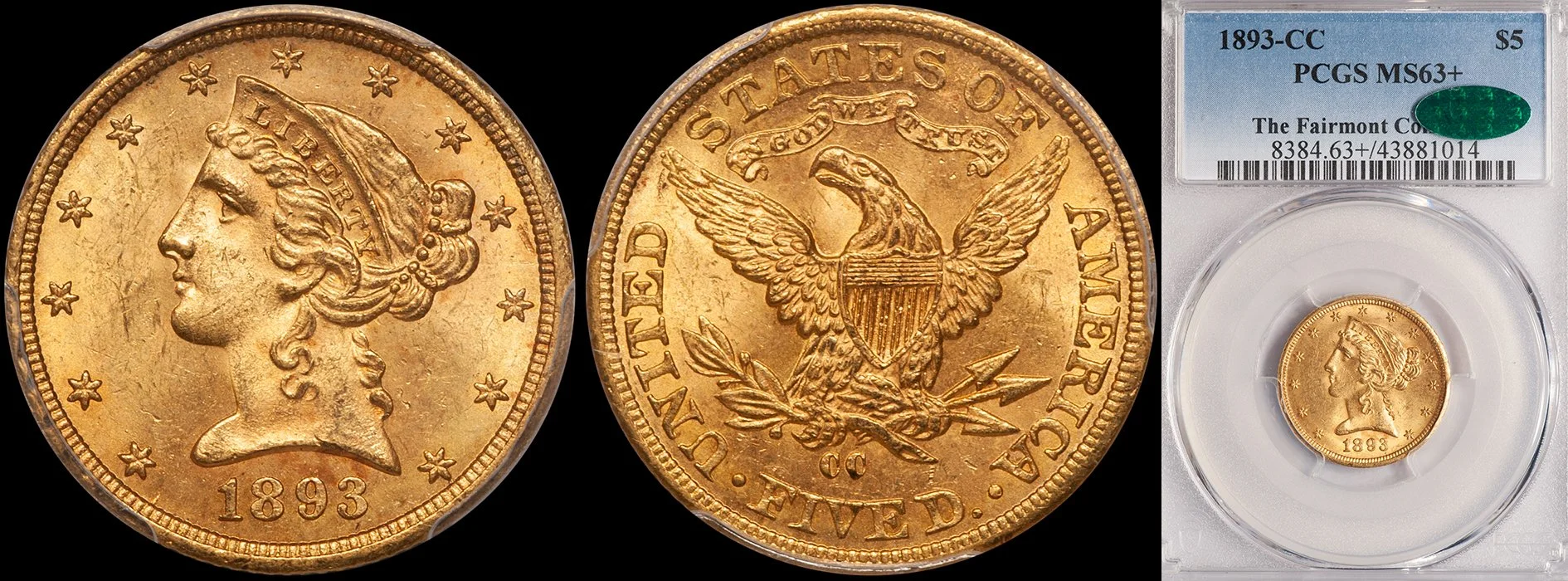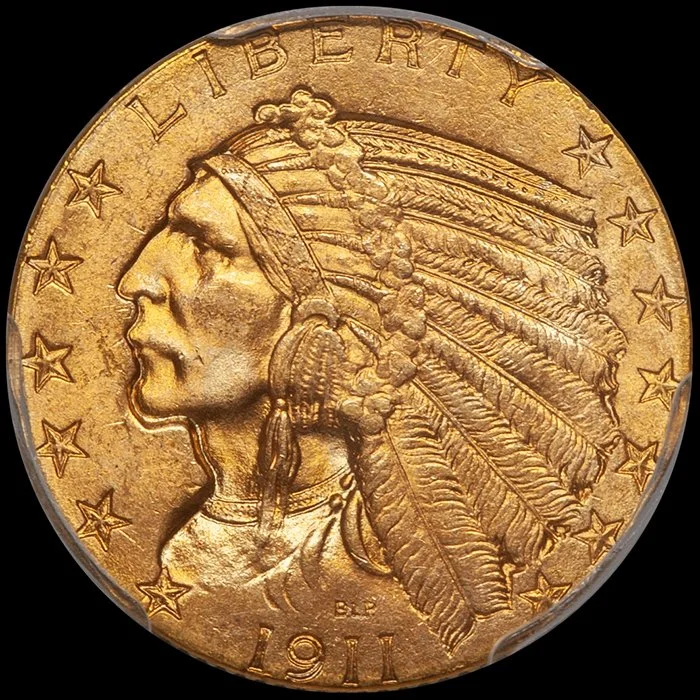Special Report May 2003: What's Hot and What's Not
/Every year, I write a report that discusses what areas of the United States gold market are active and which are slow. Since the last report (summer of 2002), the overall coin market has performed very strongly and in 2003 there are really only a small handful of areas that are not performing well. Maybe a more accurate title for this report would be "what's really hot and what's just sort of lukewarm..." First, the good stuff: what are the hottest areas in what has proven to be a very robust coin market through the first quarter of 2003?
Type One Double Eagles: In 2001 I surmised that this would become a strong area for a number of reasons. Foremost among these was the fact that I was working on a book covering the series and a large West Coast firm was getting ready to do a promotion emphasizing Type One issues.
In 2001 I surmised that this would become a strong area for a number of reasons. Foremost among these was the fact that I was working on a book covering the series and a large West Coast firm was getting ready to do a promotion emphasizing Type One issues.
There are still some great values in the Type One series. I love the Philadelphia issues from the 1850's in About Uncirculated and Uncirculated grades and feel that a number of the San Francisco dates remain good values as well.
Three Dollar Gold Pieces: For a number of years, price levels of Three Dollar gold pieces have been very flat. This is about to change as the June 2003 edition of Coin World Trends notes substantial price increases for many issues.
Do these prices increases indicate that it is now "too late" to get in on the ground floor of this series? I personally believe that despite these price increases, most Three Dollar gold pieces are still very undervalued and will increase significantly in the coming years. And (hint, hint...) I hear that there may be a book on Threes coming out in the next year which should prove to be a further impetus for the popularity of this series.
The issues that I find most appealing include the very low mintage dates from the 1880s, the Civil War issues (still extremely underpriced in my opinion) and the mintmarked dates from the 1850's.
Dahlonega Gold Coinage: In the past year, many new collectors have entered the Dahlonega market. There have not been many who have been seeking to assemble high-grade complete sets. More people are collecting Dahlonega gold coinage by type or by year.
What this means is that significant one-year type issues such as the 1855-D gold dollar or the 1839-D half eagle are more popular than I can ever remember. I probably have five want lists for nice Extremely Fine-40 to About Uncirculated-50 1838-D half eagles but have not been able to find any available for sale.
The rarest Dahlonega issues are also very popular right now. As an example, the last two 1856-D quarter eagles I have had in stock sold within hours of being posted on my website. The same goes for any of the rare, low mintage Dahlonega issues such as 1861-D gold dollars, 1840-D quarter eagles, 1855-D quarter eagles, etc.
Trends values for Extremely Fine Dahlonega gold coins seem poised for an increase. The March 2003 Bowers and Merena auction contained around forty to fifty sub-$2,500 Dahlonega coins and, in most instances, they sold for substantially over Trends to dealers.
Early Gold: Although prices haven't really increased for pre-1834 United States gold issues, the level of demand for these coins is as high as I can ever remember. This is especially true with issues that are priced in the $2,500-7,500 and first-year types such as the 1795 half eagle and eagle.
I have been looking for nice, original early gold coins at the last three or four shows I've attended and have been amazed at the lack of available material. Clearly, these coins are quietly being absorbed into the market and they appear to be going into strong, long-term collections.
The only early gold coins that aren't really "hot" right now tend to be the more common issues (such as Bust Right half eagles) in higher grades. But I have noticed that coins like an 1803 half eagle in Mint State-64 (to use a purely random example) are now far more saleable than six months ago, especially if it is accurately graded and has decent eye appeal.
Let's not forget to add the price of gold to the list of "what's hot." Last year, gold was stumbling along in the $250-260 range. As the reality of war with Iraq loomed, gold zoomed to over $360 an ounce. It subsequently backed off to $320 but has risen to over $350 as I write this (mid-May) as a result of the weakness of the dollar versus the euro.
I know a whole lot more about gold coins than I do gold bullion prices, but it seems to me that gold has a very good shot of breaking the $400 mark in the coming months. This certainly can't be bad for price levels of rare date gold coins.
Most areas in the United States gold coin market are doing at least "OK" right now. Some of the series that aren't selling very well include the following:
Better Date Indian Head Half Eagles and Eagles: The market for scarcer dates in these two series, especially in Mint State-63 and higher, remains flat. Part of the reason for this is that collecting Indian Head half eagles and eagles has fallen somewhat out of favor with collectors. Another reason is that grading standards have eroded on higher grade Indian Head gold. There is now little difference between coins graded Mint State-63 and Mint State-64 or even between Mint State-64 and Mint State-65. This makes the price spreads between these levels much lower than in the past.
These formerly popular series do have a lot going for them. They are very attractive and many dates are genuinely scarce in higher grades. If they are properly promoted, it is likely that they will become popular again, like their quarter eagle counterparts.
"Unusual Date" Gold Coins: I refer to gold coins that are marketed as "rare date gold" but which really are not as "unusual dates." As an example, a Mint State-63 San Francisco eagle from 1887-S is certainly not a common date but since there are no collectors who really care about it, paying a strong premium over type coin price is probably not a good use of your money. Around four or five years ago, there were a few large retail firms that sold a number of low population higher grade half eagles and eagles from the 1880's and 1890's. These have fallen out of favor and now that these retailers will not market them, they are very hard to sell at levels anywhere near Greysheet Bid.
As a rule of thumb, coins like this are not performing well because no one really collects them. A date collector tends to focus on the rarer branch mint issues from Charlotte, Dahlonega, Carson City and New Orleans, while type collectors favor very high-grade examples of common dates.
I expect levels for "unusual date" coins to keep dropping. If it gets to the point that an issue with a population of, say, fifteen coins in Mint State-64 with ten better can be purchased for just a small premium over generic price, then these coins are good value for the type collector. Otherwise, stay away from them.
Mint State-65 and Mint State-66 Type Three Gold Dollars: Type Three gold dollars were produced from 1856 until this denomination was discontinued in 1889. Most of the issues struck after the mid-1870's are reasonably available in the higher Uncirculated grades. The dates from the 1880's were hoarded and saw little circulation, meaning that many issues are easier to find in Mint State-64 or Mint State-65 than in About Uncirculated.
High-grade gold dollars from this era have dropped in price to the point that they are great values. A common date in Mint State-65 is now valued at $1,500-1,750 while an MS-66 is worth $2,250-2,500. At these levels, these attractive, low mintage coins are excellent values. I would not be surprised to see these "heat up" in the next year or two as new collectors realize that they are undervalued and very interesting to collect.











